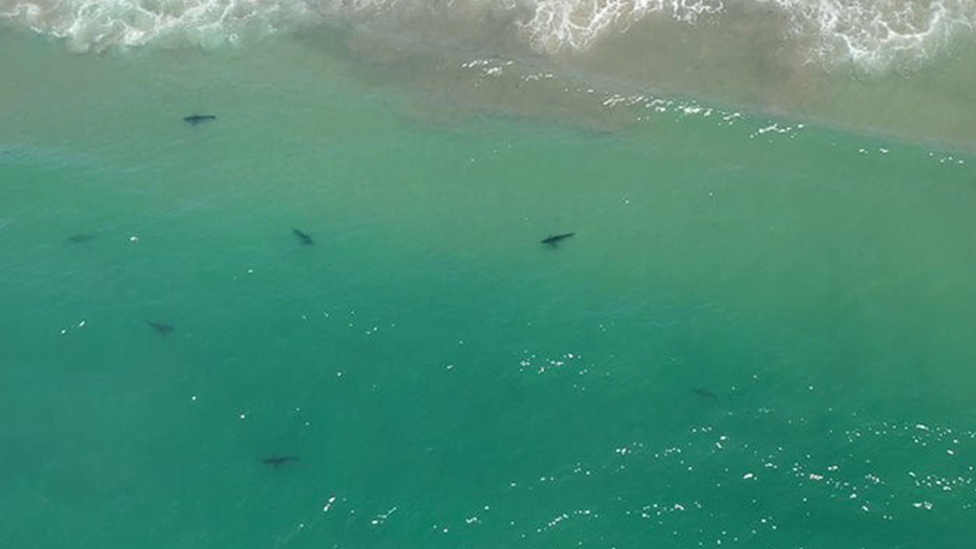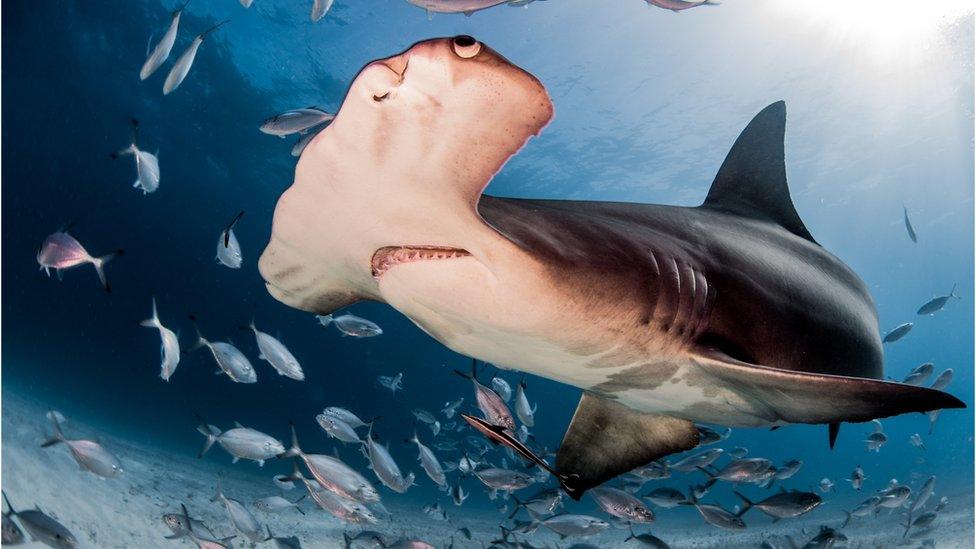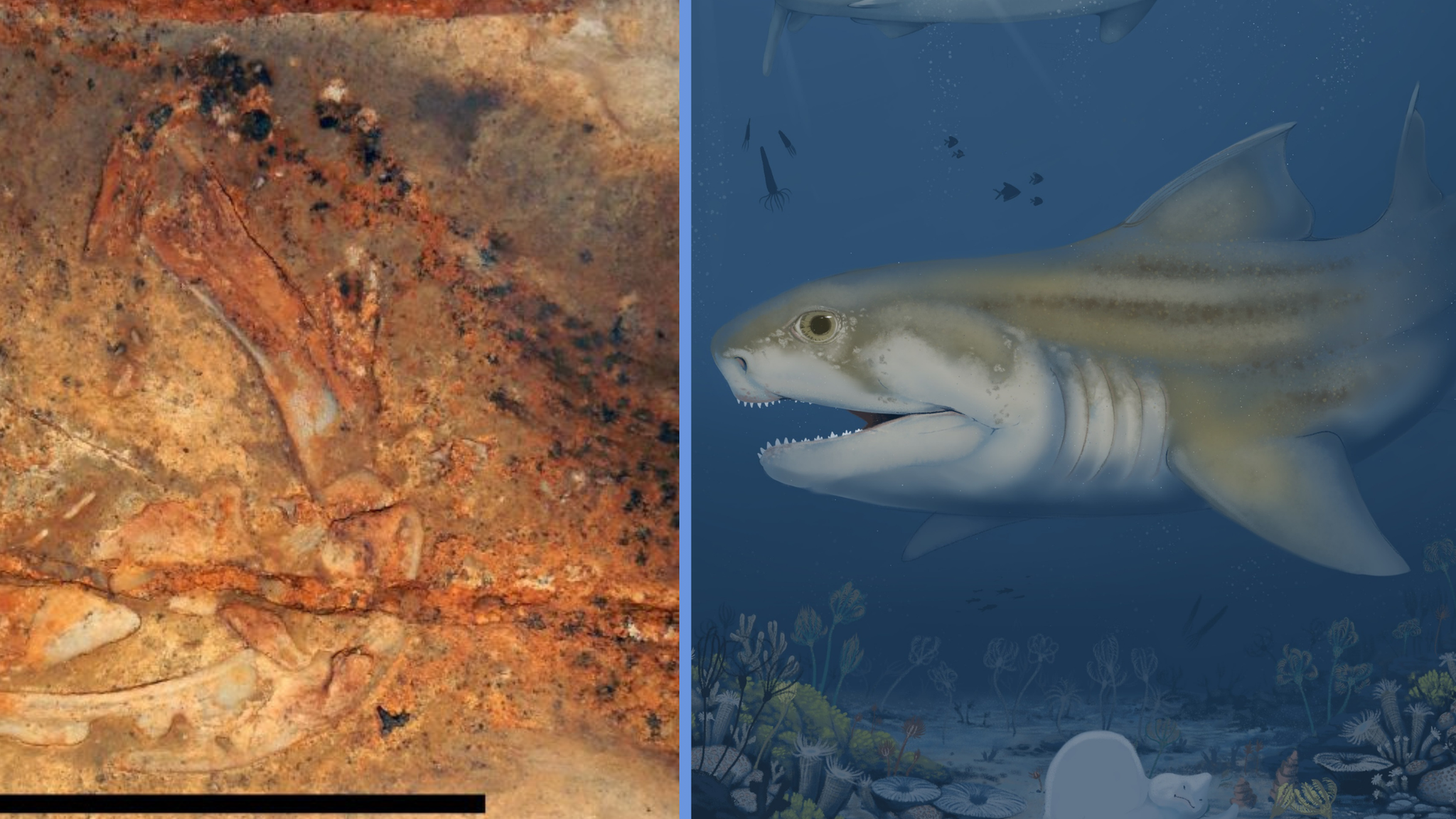Why young great white sharks may prefer shallow waters
- Published
- comments

Scientists are learning more about where young great white sharks like to spend their time
A study looking at baby and teenage great white sharks suggests they prefer shallow waters, close to the shore.
Scientists found that young sharks gather in groups called "nurseries" only a kilometre from the Californian coast, where waters are up to 10 metres deep and temperatures range between 16 and 22C.
They believe this may be because staying close to the shores helps them avoid predators, while warmer temperatures help them grow.
It's hoped the work can help with conservation efforts for the species, which is listed as vulnerable by the International Union for Conservation of Nature (IUCN).
It's also hoped it can prevent unwanted encounters with swimmers.

The sharks were tagged by scientists for the study
Facts about great white sharks
A baby shark is about 5ft long (1.5m) when it's born and may reach a length of up to four times that when it is fully grown.
They fend for themselves as soon as they are born.
Great white sharks can live up to 70 years.
How did the shark study work?
The team tagged 22 great white sharks, aged between one and six years old, with sensors off Padaro Beach near Santa Barbara in central California
This is a place where large numbers of young sharks live near the shore.
The researchers used data gathered and combined it with artificial intelligence to determine the kind of environment juvenile sharks preferred.
Senior author Dr Christopher Lowe, a professor at California State University, said: "This is one of the largest and most detailed studies of its kind."
Sharks are known to be solitary hunters, but while they are young and growing there is safety in numbers.
Earlier this year, a new born shark made headlines when drone footage taken off the coast of Southern California was shared with the world.
It is said to be the first time a baby great white shark had been caught on film.

It's thought that young sharks like to spend their time in the shallows
What did the shark study find out?
It discovered that juveniles hunted at the greatest depths around dawn and dusk, and likely had skates, rays, schooling fish and other small bony fish for dinner.
The sharks moved closest to the surface in the afternoon when the sun was hottest, possibly to increase their body temperature to help them grow.
First author Emily Spurgeon, a research technician at the Shark Lab at California State University, explained that water temperature was "a key factor" that brought juvenile great white sharks to the area near Padaro Beach.
She said: "However, there are many locations across the California coast that share similar environmental conditions, so temperature isn't the whole story."
Future experiments will look at relationships between the sharks to see if some move to different nurseries together.
- Published23 March 2021

- Published14 May 2023

- Published22 February 2024

